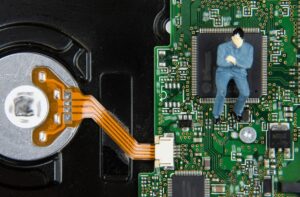The Most Common Types of Finite Element Analysis in PCB Manufacturing
2022-11-28
The development of IoT technology has led to the advancement of printed circuit board technology as well. Miniaturization and precision are the macro trends in the electronics industry. When solving any complex problem, breaking it down into smaller parts and solving them one by one can effectively eliminate the stress caused by the problem. The technique that best defines this approach is finite element analysis, or FEA as it is often called.
What is PCB finite element analysis?
Finite element analysis techniques involve modeling a system in a virtual environment in order to solve real-world structural and performance problems.
In short, what FEA does is allow the process to be broken down into smaller subsystems so that they can be closely evaluated. One practical application of FEA is to track material changes and help with material selection. Some of the benefits of FEA include
- Improving product performance
- Evaluating different designs
- Optimizing designs
Usefulness of finite element analysis for PCB manufacturing
FEA analysis can add value to different stages of PCB manufacturing in a number of ways. Examples include component selection and circuit performance. The following are detailed types of analyses applied by FEA in the design phase.
Thermal Analysis
Thermal analysis is a type of finite element analysis that is widely used in PCBs. It evaluates the board’s response to different thermal conditions, whether it is power, or thermal changes caused by environmental changes, and it helps determine the thermal conductivity pad, the use of vias and the overall thermal management design.
In addition, FEA analysis can also be useful for component manufacturers and test houses, and requires a number of tools
- PSpice, which allows modeling of electronic components, circuits, and boards to evaluate signal response.
- 3D Solver Clarity, which helps to provide 3D perspective and analyze EM parameters.
- Celsius temperature solver, which provides results to ensure that no overheating occurs
Electromagnetic compatibility and integrity
EMI or noise is a common problem with boards, and the possibility of completely eliminating noise is somewhat slim, though you are still able to achieve the best EM balance for your environment. In systems with multiple PCBAs, achieving electromagnetic compatibility is an important design aspect.
Signal and Power Integrity
To ensure product reliability, the PCBA must operate seamlessly according to set benchmarks. It is primarily the signal and power integrity of the board that determines this.
- Maximize signal-to-noise ratio
- Components should have sufficient power
- Noise reduction on power supply alignments
To summarize
Finite element analysis ensures that different aspects are accurately evaluated and standards are adhered to, the integrity of the PCB is checked and product reliability can be guaranteed.
KingPCB offers unparalleled quality and service for rapid PCB prototyping, domestic and offshore manufacturing, whether in the defense, industrial, medical or consumer electronics industries. Our consistently high quality, fast delivery, and competitively priced products set us apart from other suppliers.
Contact us now for more information on our PCB manufacturing and assembly capabilities!



